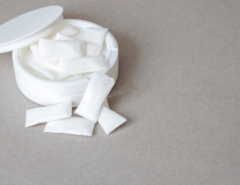Summer vacations are ending, stores are stocked with school supplies, and the start of school is just around the corner. With the start of a new school year comes special poison risks that everyone should know about. Talk with your school-aged children, other guardians, and teachers about poison safety. Sharing the following tips can help keep everyone safe.
Students of All Ages
Dares from peers or pranks on teachers can lead to poison exposures, as well as other harm and disciplinary action. Remind students that if their peers dare them to do something potentially dangerous, they should say no or walk away. Talk with students about internet challenges, such as the “cinnamon challenge,” “tide pod challenge,” and “condom snorting challenge” reminding them of the dangers. It seems new challenges are created almost daily, placing children and teens at an increased risk for poison exposures.
Ingesting hand sanitizer can be dangerous, depending on the amount. Remind students that hand sanitizer is for cleaning their hands only. It should not be used in any other way. Learn more with our hand sanitizer information sheet.
Pens, pencils, and markers are meant only for writing or drawing. Keep these items, as well as other art supplies like paints, out of the mouth and away from eyes. Keep all art supplies in their original containers. Read instructions carefully before use.
Science labs must be taken seriously. Remind students to:
- Know where first aid items are located in case of an emergency.
- Not be in the lab without a teacher’s supervision.
- Keep their eyes, face, and hands clean and protected with gloves and goggles when instructed by their teacher.
- Look with their eyes only. They should not touch or taste anything unless instructed by their teacher.
Teens and Young Adults
Back-to-school can be very stressful for high school and college students. Heavy class loads, homework, exams, and research papers can cause teens to seek out unhealthy or dangerous ways to cope. Substances that are commonly misused include:
Caffeine intake among teens usually exceeds recommended amounts. Teens and young adults often use more than one caffeine-containing product at the same time. This is known as “stacking.” Caffeine overdoses are real and can be dangerous. Be sure to read labels and make sure that you stay within the recommended amount. Teens should consume no more than 100 milligrams (mg) per day. Adults should consume only 300-400mg per day.
Alcohol is the most commonly misused substance among teenagers. Mixing alcohol with energy drinks is also common and dangerous. But, while teens may feel more awake when they mix these substances, the alcohol still affects their judgment and slows their reaction time. Make sure the teens and young adults in your life understand how alcohol can affect them, as well as how it affects others.
E-cigarettes and vaping are also very popular among this age group. Some products contain nicotine, while others do not. Most users do not know whether or not the product they are using contains nicotine, as well as the amount. The Surgeon General has stated that there is no safe level of nicotine use for youth. It is an addictive and brain-damaging substance. You can learn more with our e-cigarette and nicotine information sheet.
Talk to your teens and young adults about how to manage school-related stress in a healthy way. Using the substances mentioned above to deal with stress or to “fit in” is never a good idea. If these substances are present in the home, store them where teens and young adults cannot access them. Having ongoing, open discussions about the stresses that come with school could be the answer to helping your teen or young adult manage stress and avoid substance use.
Teachers
Make sure classroom cleaning supplies are stored away and out of reach of students. If poison safety is part of your curriculum, the MPC has educational materials available at no cost for teachers and school nurses in Maryland to help supplement your lesson. For more information, please contact us.
After School
When students get home from school, have a specific place for their backpacks and lunchboxes that is out of reach if there are younger children or pets in your home. Common poisons for children that are often found in backpacks and lunchboxes include:
- Medicines
- Cosmetics
- Personal care products
Common poisons for pets found in backpacks and lunchboxes can include:
- Chocolate
- Gum
- Grapes
- Raisins
- Macadamia nuts
- Cold packs
- Medicines
Download our poison proofing information sheet for more tips.
Remember to call the poison center at 1-800-222-1222 if you think your child or student has been exposed to a poison. Our pharmacists and nurses are available 24 hours a day, seven days a week to help. You can also text POISON to 797979 to add Poison Control as a contact in your mobile phone. We hope these tips help your family have a safe, healthy, and happy start to the school year!





Leave a Reply